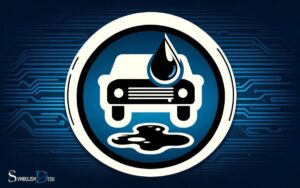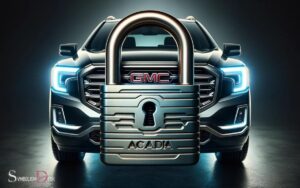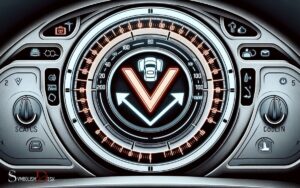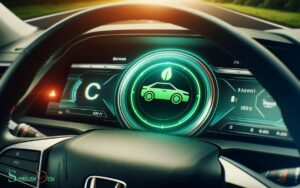Blue Headlight Symbol in Car: Everything You Need to Know!
The blue headlight symbol in a car’s dashboard is an indicator that the vehicle’s high-beam headlights are activated.
These lights are brighter and more focused than standard headlights, allowing for better visibility at night or in poorly lit conditions.
However, it is important to switch to low-beam headlights when approaching or being followed by other vehicles to avoid blinding other drivers.
The blue headlight symbol typically appears as a headlamp with lines emanating from it, indicating that the high beams are on.
It’s necessary to understand this symbol as using high beams inappropriately can cause accidents or discomfort to other drivers.
Drivers should use high beams responsibly and be aware of the following points:
Always be mindful of the blue headlight symbol on your dashboard, and switch between high and low beams to ensure safety for all road users.
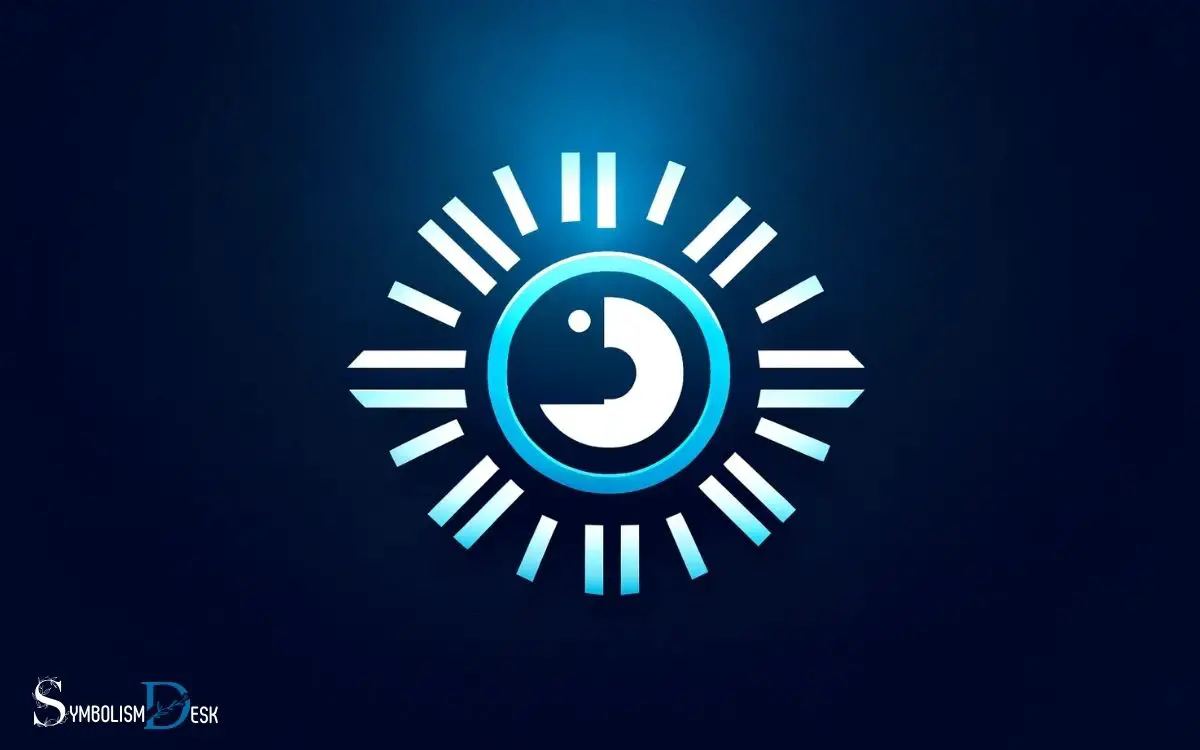
Key Takeaway
Meaning of the Blue Headlight Symbol
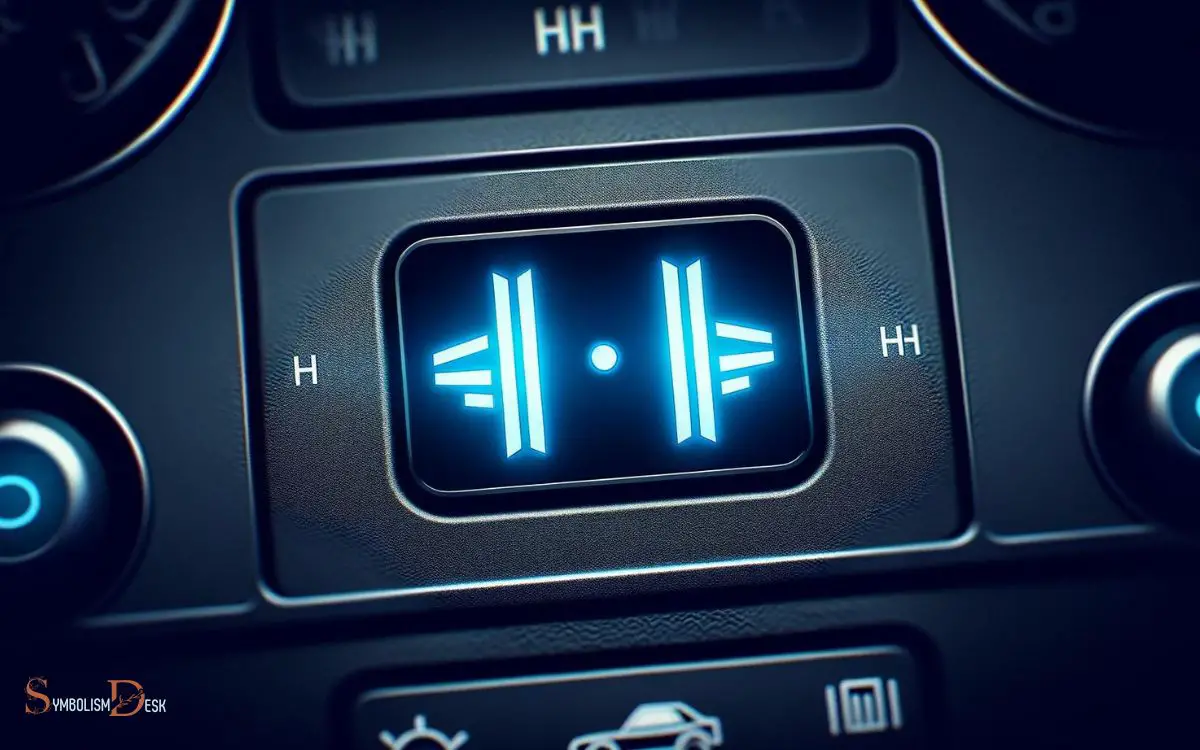
The blue headlight symbol in a car indicates the activation of the high beam headlights. When the high beams are turned on, the blue headlight symbol on the dashboard illuminates, signaling that the high beams are in use. This feature is particularly useful for increasing visibility when driving in poorly lit areas or on dark roads without streetlights. However, drivers should exercise caution and switch to low beams when approaching other vehicles to avoid blinding oncoming traffic. The blue and white car symbol serves as a clear and universal reminder that the high beams are active, ensuring drivers remain aware of their headlight usage.
High beam headlights are designed to provide maximum illumination of the road ahead, especially in poorly lit or rural areas.
It’s important for drivers to be aware of when their high beams are on, as they can be blinding to oncoming traffic if not dimmed when approaching other vehicles.
Understanding the meaning of this symbol is crucial for safe and responsible driving, as it helps to prevent accidents and ensures that the high beams are used appropriately.
Causes of the Blue Headlight Symbol
Activated by the driver, the blue headlight symbol on the dashboard illuminates to indicate the use of high beam headlights.
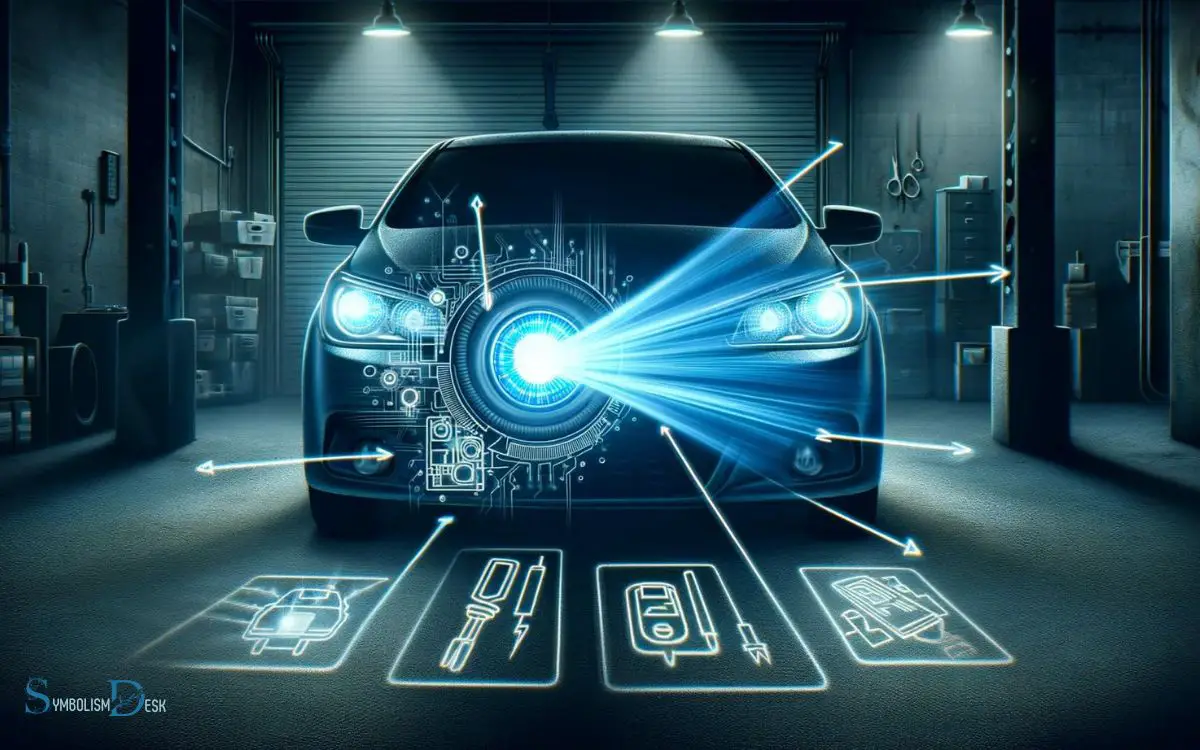
The causes of the blue headlight symbol to illuminate include:
- Driver’s Activation: When the driver manually activates the high beam headlights, the blue headlight symbol lights up on the dashboard.
- Automatic Activation: Some vehicles are equipped with automatic high beam headlights that use sensors to detect low light conditions or the presence of other vehicles. When activated, the blue headlight symbol will illuminate on the dashboard.
- Malfunction: In some cases, a malfunction in the headlight system or the dashboard indicator itself can cause the blue headlight symbol to illuminate erroneously.
These causes can help drivers understand why the blue headlight symbol is illuminated and take appropriate action.
Potential Risks Associated With the Blue Headlight Symbol
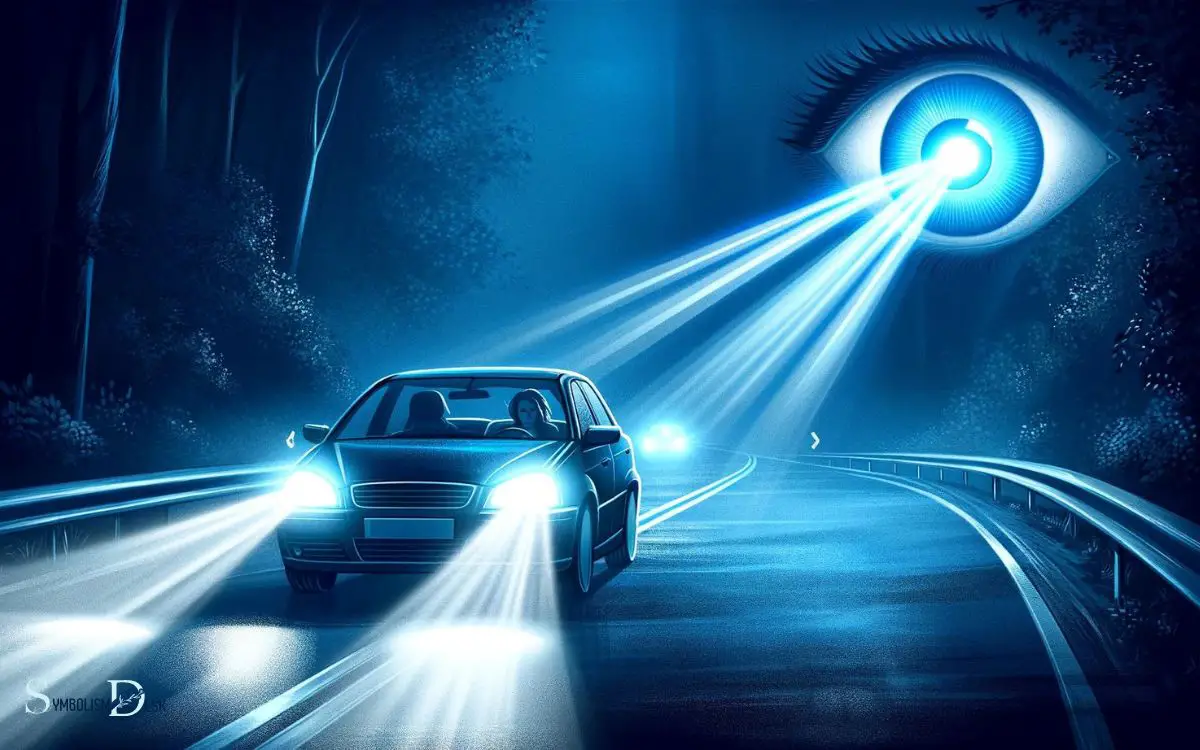
When the blue headlight symbol is illuminated, drivers should be aware of the potential risks associated with its use, especially in certain driving conditions. One potential risk is the blinding effect it can have on other drivers.
The blue light emitted from these headlights can cause discomfort and temporary vision impairment, increasing the risk of accidents, especially on dark, winding roads.
Additionally, the use of blue headlights may violate regulations in certain regions, leading to potential fines or citations.
Moreover, blue lights can be mistaken for emergency vehicles, causing confusion and potential hazards on the road.
It’s important for drivers to consider these potential risks and exercise caution when using blue headlights to ensure the safety of themselves and others on the road.
How to Address the Blue Headlight Symbol
Drivers should carefully consider the appropriate measures for addressing the blue headlight symbol, taking into account its potential risks and regulatory considerations.
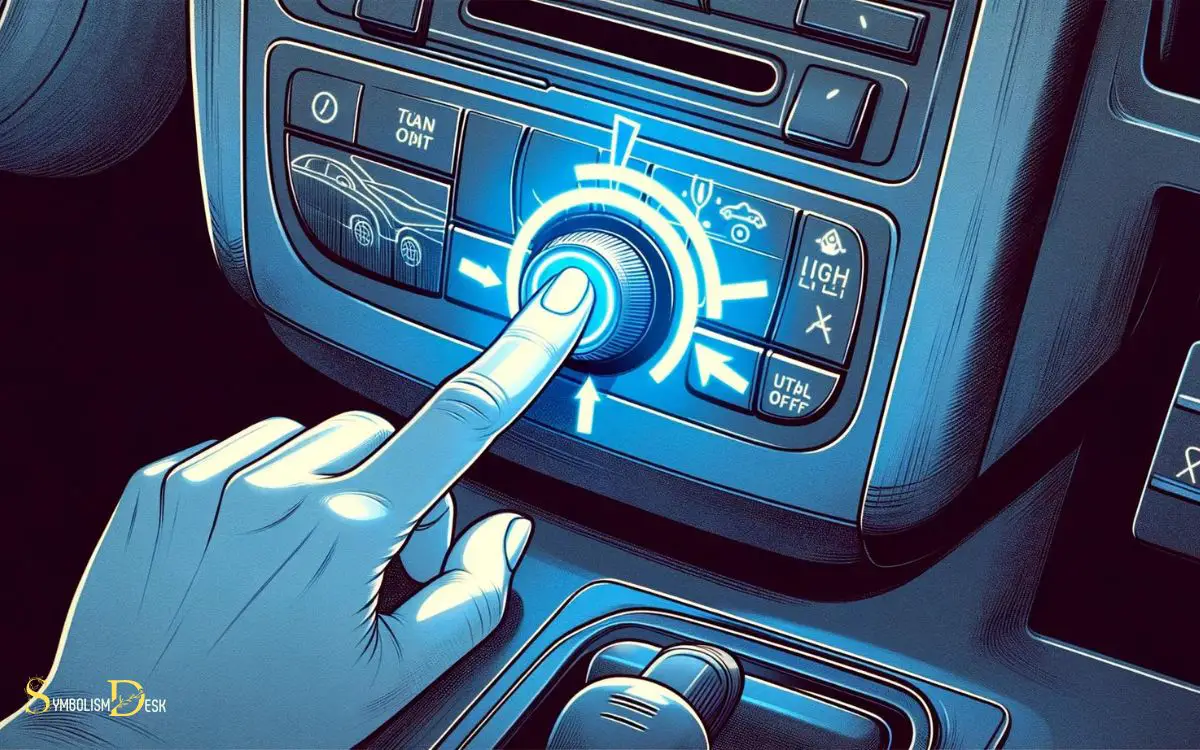
When addressing the blue headlight symbol in a car, drivers should follow these steps:
Check Headlight Functionality: Ensure that the blue headlight symbol is not indicating a malfunction in the headlight system. This can be done by inspecting the headlights for any signs of damage or by consulting the vehicle’s manual for troubleshooting steps.
Verify Legal Requirements: Research and understand the regulations regarding blue headlights in the specific region or country where the car is being driven.
Different areas may have varying laws regarding the use of blue headlights, and it is important to comply with these regulations to avoid potential legal consequences.
Seek Professional Assistance: If unsure about the meaning of the blue headlight symbol or how to address it, seek help from a qualified automotive professional to diagnose and resolve any issues related to the symbol.
Importance of Resolving the Blue Headlight Symbol
The blue headlight symbol in a car indicates a potentially serious issue that should be addressed immediately. Ignoring this warning could pose a safety hazard for the driver and other road users.
It may also point to a potential electrical system problem that could lead to more significant issues if not resolved promptly.
Safety Hazard, Address Immediately
Immediately addressing the blue headlight symbol in a car is crucial for ensuring safety on the road.
Ignoring this warning can lead to potential safety hazards that may compromise the well-being of the driver, passengers, and other road users.
Resolving the blue headlight symbol promptly is of utmost importance for the following reasons:
- Reduced Visibility: The blue headlight symbol often indicates a malfunction in the vehicle’s lighting system, leading to reduced visibility during nighttime or adverse weather conditions.
- Risk of Accidents: Malfunctioning headlights can increase the risk of accidents, as other drivers may have difficulty seeing the vehicle or understanding its movements.
- Legal Compliance: Operating a vehicle with malfunctioning headlights may lead to legal repercussions, such as fines or citations from law enforcement.
Addressing the blue headlight symbol promptly is essential for maintaining road safety.
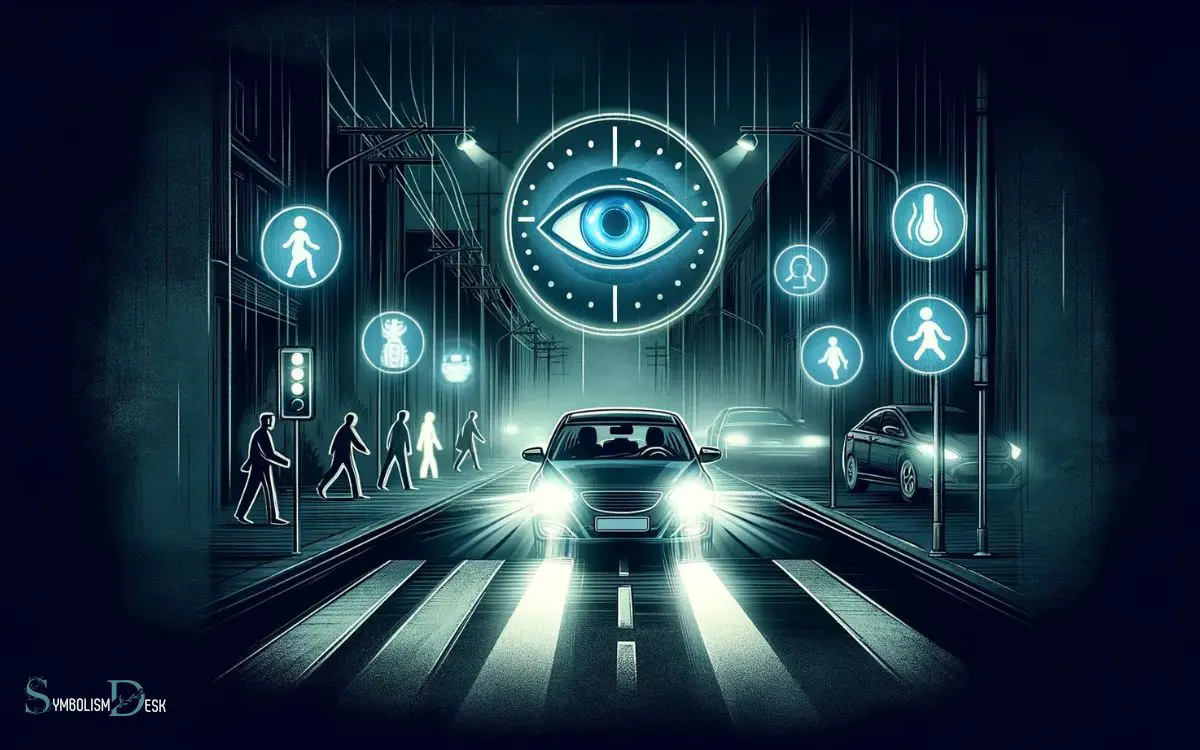
Potential Electrical System Issue
Upon detecting the blue headlight symbol in a car, addressing potential electrical system issues is crucial for ensuring overall vehicle safety. Ignoring this warning can lead to various electrical system malfunctions, posing serious safety risks.
The following table outlines potential electrical system issues and their implications:
| Potential Electrical System Issue | Implications |
|---|---|
| Faulty wiring | Risk of electrical fires |
| Malfunctioning alternator | Battery draining, engine stalling |
| Defective fuses | Loss of critical functions, fire hazard |
| Faulty battery | Starting issues, electrical component failure |
| Corroded connectors | Poor electrical connections, system failures |
Resolving the blue headlight symbol promptly can prevent these issues, ensuring the vehicle’s electrical system operates reliably and safely.
Preventing Recurrence of the Blue Headlight Symbol
To prevent the recurrence of the blue headlight symbol, drivers should regularly check their vehicle’s headlight system.
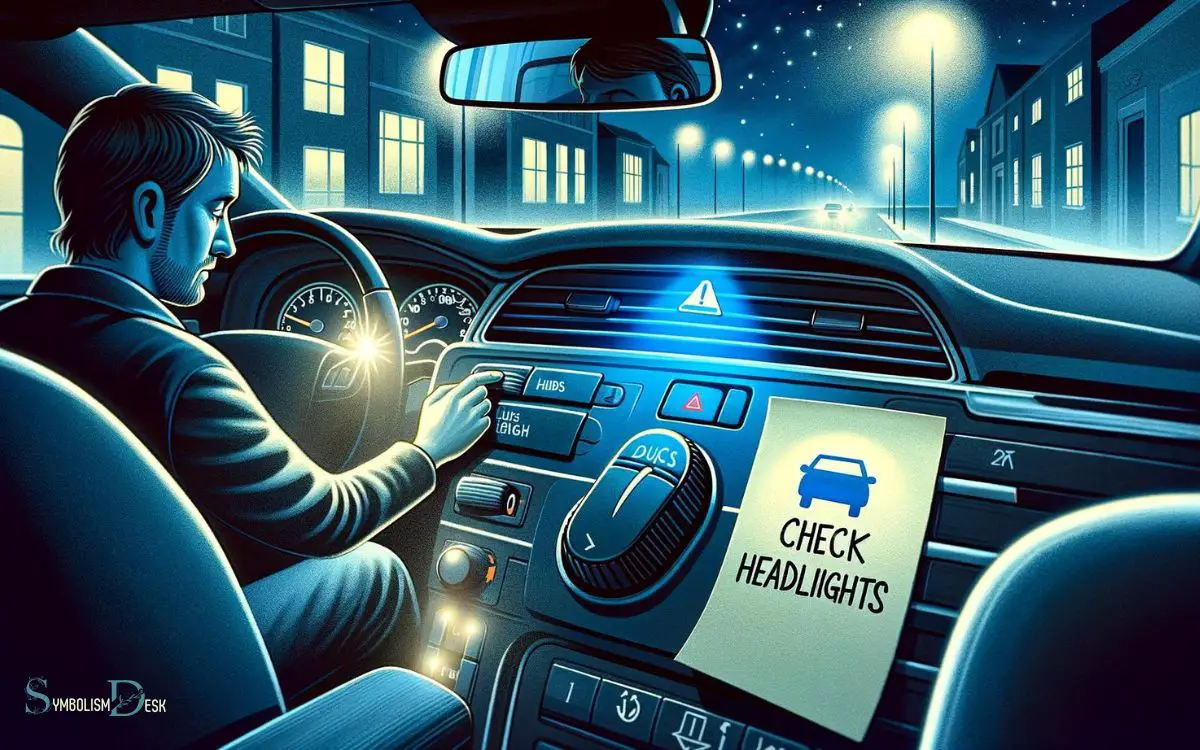
This can be done by performing the following:
- Inspecting the Bulbs: Ensure that the headlight bulbs are in good condition, without any signs of damage or discoloration.
- Checking the Connections: Verify that the electrical connections to the headlights are secure and free from corrosion.
- Examining the Headlight Lens: Clean the headlight lens regularly to remove any dirt, debris, or oxidation that may diminish the brightness of the headlights.
Conclusion
The blue headlight symbol in a car indicates a potential issue with the vehicle’s headlight system. It is important to address this symbol promptly to avoid potential risks such as reduced visibility and safety hazards. Remember, “an ounce of prevention is worth a pound of cure.”
By addressing the blue headlight symbol and taking preventive measures, you can ensure a safer and more reliable driving experience.

